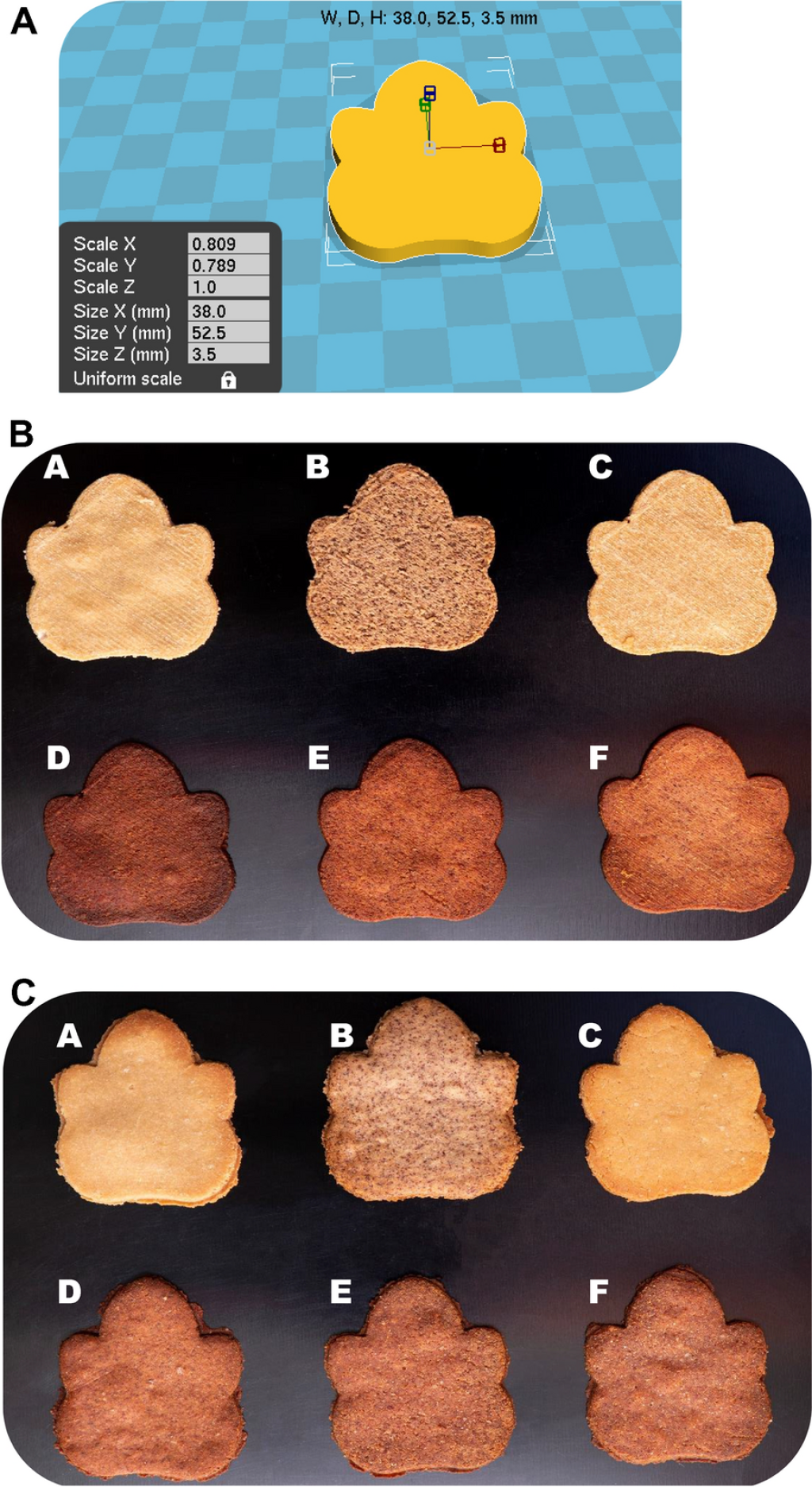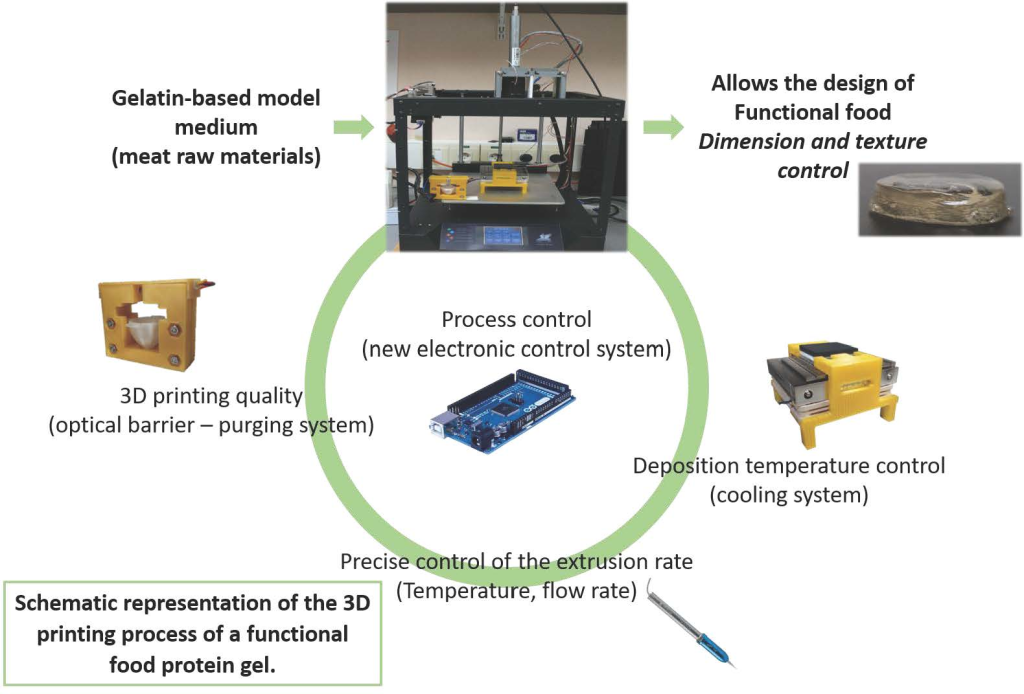3D Food Printing: Genesis, Trends, and Prospects
Greetings, Readers!
Welcome to this informative article on 3D food printing. In this piece, we will explore the genesis, trends, and prospects of this fascinating technology that is revolutionizing the food industry. So, grab a cup of coffee and let’s dive in!
Introduction
1. What is 3D Food Printing?
2. The Genesis of 3D Food Printing

Image Source: springernature.com
3. The Emergence of Trends
4. The Future Prospects

Image Source: mdpi-res.com
5. Exploring the Possibilities
6. The Impact on the Food Industry
7. Challenges and Opportunities
What is 3D Food Printing?

Image Source: rgstatic.net
3D food printing is a revolutionary technology that allows the creation of edible structures and designs using food ingredients. It involves the use of a special printer that extrudes layers of edible materials, such as dough, chocolate, or sugar, to build intricate and customized food items.
With 3D food printing, chefs and food enthusiasts can push the boundaries of culinary creativity, creating visually stunning and unique dishes that were once unimaginable.
The Genesis of 3D Food Printing
The concept of 3D food printing originated from the field of additive manufacturing, which involves the layer-by-layer construction of objects using various materials. The early pioneers of 3D food printing experimented with different approaches to adapt this technology for the culinary world.
In 2006, the first patent for a food-based 3D printer was filed, marking the beginning of a new era in gastronomy. Since then, researchers, chefs, and food companies have been continuously refining and expanding the possibilities of 3D food printing.
The Emergence of Trends
As 3D food printing gained recognition, several trends began to shape its development:
1. Customization: One of the key trends in 3D food printing is the ability to create customized food products tailored to individual preferences and dietary needs. This not only enhances the dining experience but also opens up new possibilities for personalized nutrition.
2. Sustainability: With growing concerns about food waste and environmental impact, 3D food printing offers a potential solution. By utilizing alternative ingredients and optimizing portion sizes, it has the potential to reduce food waste and promote sustainable practices in the food industry.
3. Culinary Innovations: 3D food printing is pushing the boundaries of culinary arts, enabling chefs to experiment with new textures, flavors, and presentations. It encourages creative thinking and fosters innovation in the kitchen.
4. Accessibility: As the technology advances, the cost of 3D food printers is expected to decrease, making them more accessible to home cooks and small businesses. This democratization of 3D food printing will spur further experimentation and creativity.
5. Health and Nutrition: 3D food printing has the potential to address nutrition challenges by incorporating functional ingredients, such as vitamins and minerals, into food products. It can also enable the creation of customized meals for individuals with specific dietary requirements or restrictions.
The Future Prospects
The future of 3D food printing looks promising. Here are some key prospects:
1. Mass Customization: With advancements in technology, 3D food printing has the potential to become a mainstream method of food production. Imagine a world where you can order personalized meals that are tailored to your taste preferences and nutritional needs.
2. Food Security: 3D food printing can play a vital role in addressing global food security challenges. By utilizing alternative ingredients and reducing food waste, it can contribute to more sustainable and efficient food production systems.
3. Space Exploration: NASA and other space agencies are exploring the potential of 3D food printing for long-duration space missions. This technology can provide astronauts with fresh and nutritious meals, reducing the need for extensive food storage and logistics.
4. Culinary Tourism: As 3D food printing becomes more widespread, it has the potential to become a unique attraction in the world of culinary tourism. Imagine visiting a restaurant where your food is customized and created using cutting-edge 3D printing technology.
5. Medical Applications: 3D food printing can revolutionize the way we produce food for individuals with specific dietary requirements or medical conditions. It can help create personalized meals for patients with allergies, swallowing difficulties, or other dietary restrictions.
Advantages and Disadvantages of 3D Food Printing
Advantages:
1. Customization: 3D food printing allows for the creation of personalized and customized meals, catering to individual preferences and dietary needs.
2. Waste Reduction: By optimizing portion sizes and utilizing alternative ingredients, 3D food printing has the potential to reduce food waste.
3. Culinary Creativity: Chefs can experiment with new flavors, textures, and presentations using 3D food printing, pushing the boundaries of culinary arts.
4. Nutrition Enhancement: Functional ingredients can be incorporated into 3D printed food, providing added nutritional benefits.
5. Efficiency: With the automation capabilities of 3D food printing, the production process can be streamlined, saving time and resources.
Disadvantages:
1. Cost: Currently, 3D food printers are expensive, limiting their accessibility to larger establishments and institutions.
2. Taste and Texture: Some challenges remain in achieving the same taste and texture as traditionally prepared food.
3. Technical Expertise: Operating and maintaining 3D food printers require specialized knowledge and skills.
4. Food Safety: Ensuring food safety standards and regulations are met in 3D food printing can be complex.
5. Consumer Acceptance: Widespread acceptance and adoption of 3D printed food may take time as consumers adjust to the concept.
FAQs (Frequently Asked Questions)
1. Can 3D printed food be as nutritious as traditionally prepared food?
Yes, 3D printed food can be designed to include functional ingredients and meet specific nutritional requirements.
2. Is 3D food printing safe?
When proper food safety protocols are followed, 3D food printing can be safe. However, it requires adherence to strict hygiene and quality control measures.
3. Can I 3D print any type of food?
While 3D food printing is versatile, not all foods are suitable for printing. Foods with complex textures or high moisture content may present challenges.
4. How will 3D food printing impact traditional cooking methods?
While 3D food printing offers unique possibilities, it is unlikely to replace traditional cooking methods entirely. It is more likely to complement and enhance culinary techniques.
5. Will 3D food printing eliminate the need for chefs?
No, 3D food printing is a tool that can augment a chef’s creativity and precision. Chefs will continue to play a vital role in creating culinary experiences.
Conclusion
In conclusion, 3D food printing is a groundbreaking technology with immense potential. Its genesis, trends, and prospects are shaping the future of the food industry. As this technology continues to evolve, it is crucial to embrace its advantages, address its challenges, and explore its endless possibilities. So, let’s embark on this journey of culinary innovation together!
Thank you for joining us on this informative exploration of 3D food printing. We hope you found this article insightful and inspiring. Now, it’s time for you to take action! Dive into the world of 3D food printing and witness the transformation of gastronomy firsthand. Bon appétit!
Final Remarks
The information provided in this article is based on current knowledge and research about 3D food printing. However, it is essential to stay updated with the latest developments in this rapidly evolving field. The future of 3D food printing holds even more exciting possibilities than we can imagine today. So, stay curious, embrace innovation, and let your culinary adventures unfold!